We left Wu Yi Shan on April 15, 2010, on a regular train. We found ourselves in the company of very nice and friendly people. The open carriage was filled with loud chatter, laughter, and fun. Some played cards, others happily helped us prepare instant noodles and offered us peanuts grown in their gardens. Occasionally, the train attendant attracted attention when she actively tried to sell us almost everything from slippers to paintings of Mao Zedong to toothbrushes. The 300-kilometer journey on the soggy track took about 8 hours and ended in the city of Fuzhou. Fortunately, hot water was available for free everywhere at stations and on trains, so making tea or something to eat was no problem. The next day, we flew from Fuzhou to Chengdu in Sichuan province, where we spent several days. Today, the modern city of Chengdu, with a population of 11 million, was an important trading center 2,000 years ago, from where the southern Silk Road led to India.
Emei mountains
From Chengdu, our second tea expedition led us to Mount Emei, located south-southwest of Chengdu in a subtropical monsoon region. The average annual temperature ranges from 16.5 to 18 °C, the average humidity is 85%, and the amount of precipitation is about 1,500 mm per year. Tea is grown in this area at an altitude of about 1,100 m above sea level, although Mount Emei itself reaches an altitude of 3,000 m above sea level and is located on the natural border where lowland China turns into mountainous terrain. The soil is red and rich in nutrients. The area could also be called the land of eternal spring, as there are over 150 rainy days a year and it is very humid. The environment is incredibly green and full of fresh air. Natural conditions allow tea to be harvested continuously for 8 months of the year in this area. However, the quality declines, and the best teas are from the first harvests, which begin in mid-April.
Salad helps
The tea plantations are located below Shengshou Temple, also known as the Temple of Ten Thousand Years. The temple has survived 18 strong earthquakes over the past 400 years without damage and is considered an architectural gem of ancient China from the early 5th century AD. The temple courtyard was filled with peace and the scent of incense sticks. A few meters from the path we were descending, tea plantations stretched out. Everything around us was incredibly green. For example, farmers had planted lettuce among the tea bushes. As we later learned, lettuce binds atmospheric nitrogen, thus naturally enriching the soil and helping the tea bushes grow. On our way down from the temple, we decided to have tea at a local buffet. The lady of the house happily scooped tea into a tall glass cup, poured hot water from a thermos, and we could begin our tasting. This green tea was processed in a manner typical of this region and was completely fresh. We liked it very much, and they told us that it was Emei Shan Zhu Ye Qing (bird's tongue from the Emei Mountains). The tea was great, refreshing after a long walk, and the dancing leaves in the glass had a very relaxing effect. After a bit of haggling over the price, we finally managed to buy 500 g of the first tea for ourselves and our tea room from the 4 kg available. On our way down, we were approached by another lady who saw that we had bought something above and wanted to sell us her tea, but at first glance we noticed a flaw in the processing and did not buy the tea.
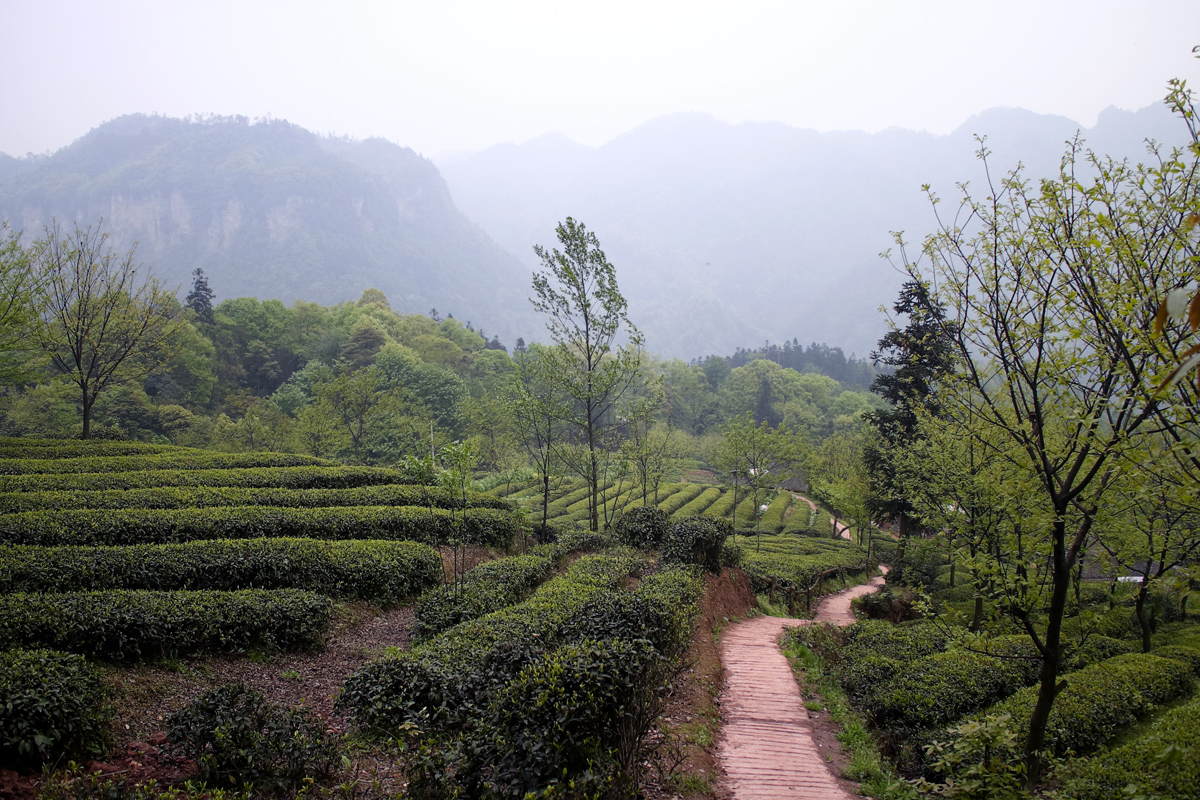 |
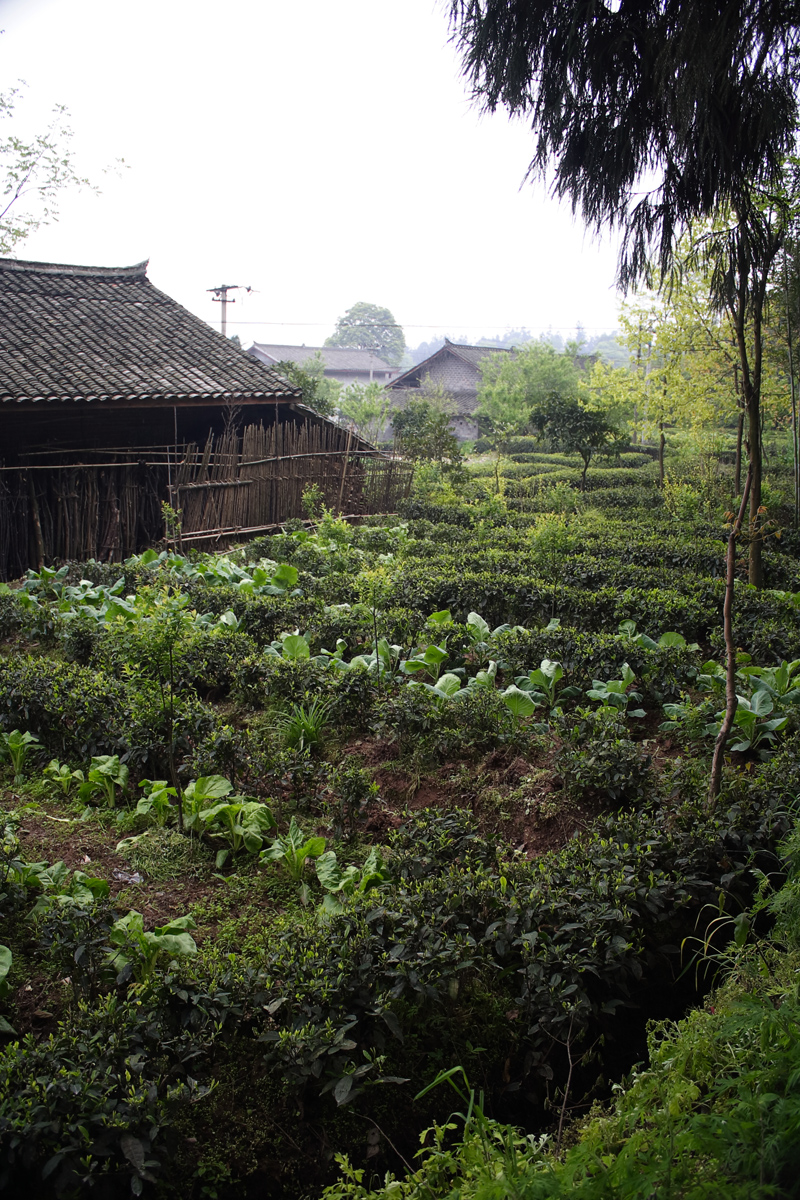 |
From harvest to tea
In the Emei region, tea is processed using traditional Chinese methods. After harvesting, the tea leaves are placed in a wok-like pan. They are exposed to a temperature of around 100 to 120 °C for 1 to 3 minutes. This stops oxidation and keeps the tea green. The next step is shaping or rolling, and finally the tea is dried. High-quality tea processed in this way has a fresh green color, and the infusion is light green. In addition to slightly grassy notes, the aroma may also include floral, citrus, and vegetable notes (e.g., fresh peas, corn), as well as notes reminiscent of roasted chestnuts or peanuts, which are the result of processing. When preparing in a glass cup (2.5 dcl), use 3 g of green tea, which is poured over with water cooled to 80 to 90 °C for 1 minute. The cup itself lowers the temperature by about 10 degrees, so the tea is brewed at 70 to 80 °C. High-quality tea will give us 3 delicious infusions. In restaurants, we recommend pouring 0.5 l of water cooled to 80 to 85 °C over 5 to 6 g of tea leaves and steeping the tea for 2 to 3 minutes, depending on the type and taste.
Meng Ding Shan
Our next tea journey took us to a friendly tea factory in the Meng Ding area below Meng Ding Shan Mountain in Sichuan Province. Meng Ding Shan is located southwest of Chengdu, 65 km from Emei Shan as the crow flies, and has the same climatic conditions. On these plantations, where our teas come from, tea is grown organically and processed using Japanese technology. Here we had the opportunity to participate in the harvesting and processing of tea leaves. The factory manager showed us around the plantations, showed us how they catch insects so they don't have to use pesticides, what the plantation looks like after radical pruning for rejuvenation, and how we can tell that the tea bushes have been affected by frost. At the tea processing factory, the director accompanied us on a tour of the facilities and tirelessly explained the entire processing technology process to us – from quality control of freshly picked leaves to packaging of processed tea.
 |
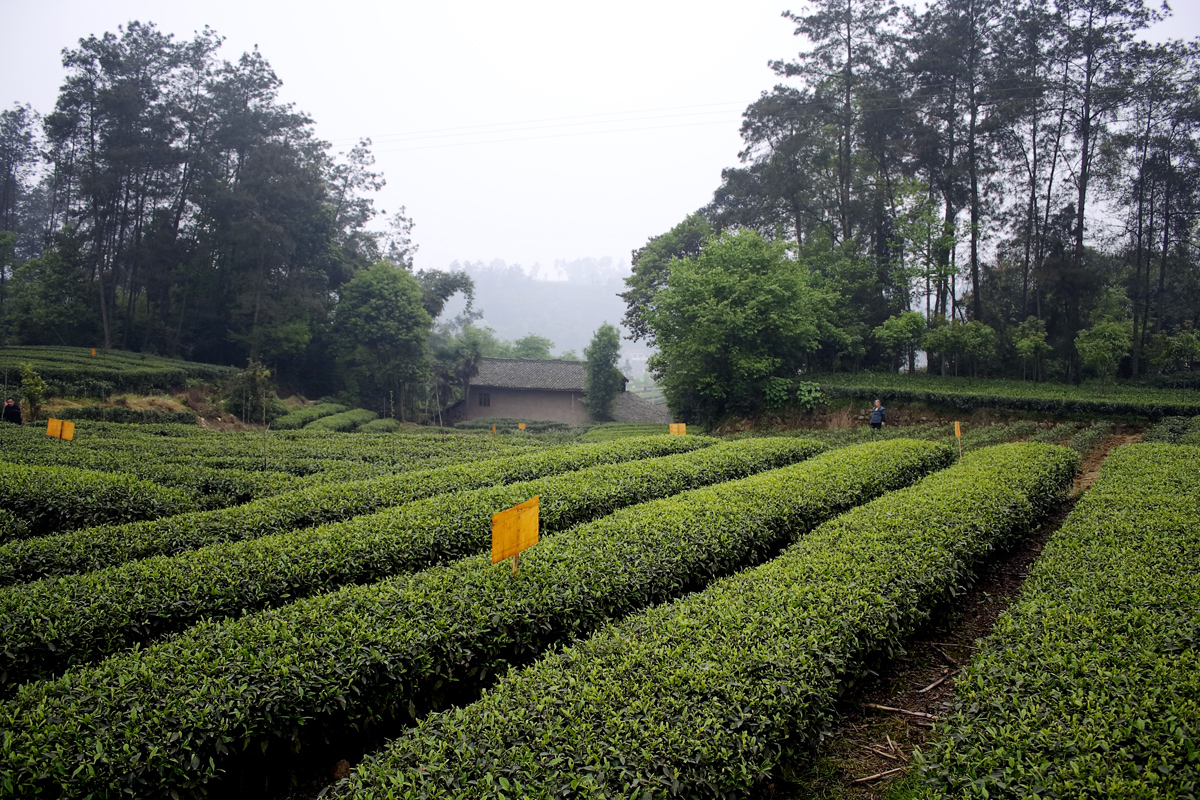 |
Japanese technology
In this area, as we have already mentioned, tea is processed mainly using Japanese technology, i.e. by machine. After harvesting, the leaves are left to wilt for several hours in a vat the size of a shipping container, into which warm air is blown. The aroma that spread in this mild environment was incredibly pleasant and intense. From there, the tea was transferred to an automatic line, where it was processed until completion. Next came the oxidation stop: the tea leaves were exposed to hot steam at a temperature of 120 degrees for 20 seconds. After this step, the initial drying took place in a dryer, where the tea leaves lost some of their moisture. Since the moisture content is still sufficiently high, the tea passes through a "roller" and the leaves are shaped. If they were too dry, the leaves would break. From the roller, the tea goes to another dryer, where its residual moisture content is further reduced. The tea is then shaped into flat needles and dried. The character of Meng Ding teas is reminiscent of Japanese teas. The aroma is dominated by grassy tones with a subtle floral accent (lilac). However, the taste is milder than that of Japanese teas. The infusion is a fresh green color with a long aftertaste. Thanks to the processing technology, teas from this region are ideal for cold maceration. For classic preparation, we can proceed in the same way as with teas from Emei. For cold preparation, pour 3 g of tea leaves into a 2.5 dcl glass with cold water and steep. Depending on taste, steep for 5 to 10 minutes; this process can be repeated twice.
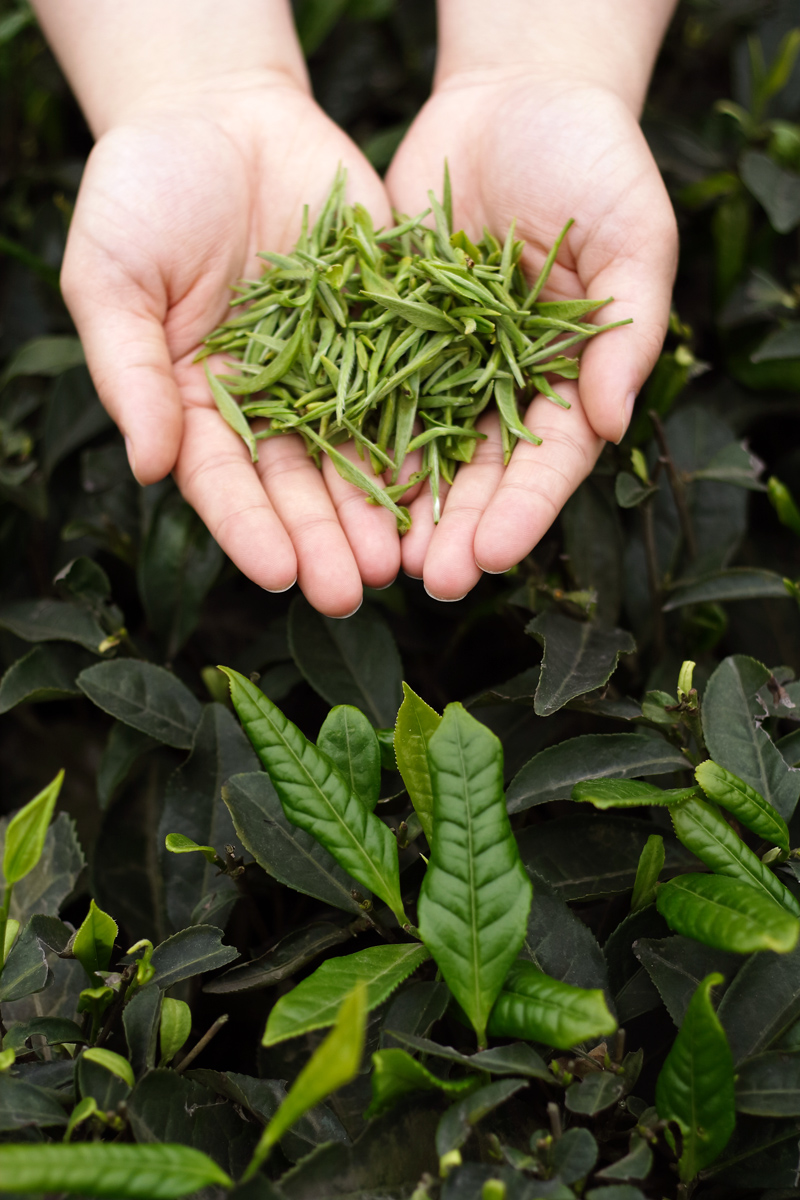 |
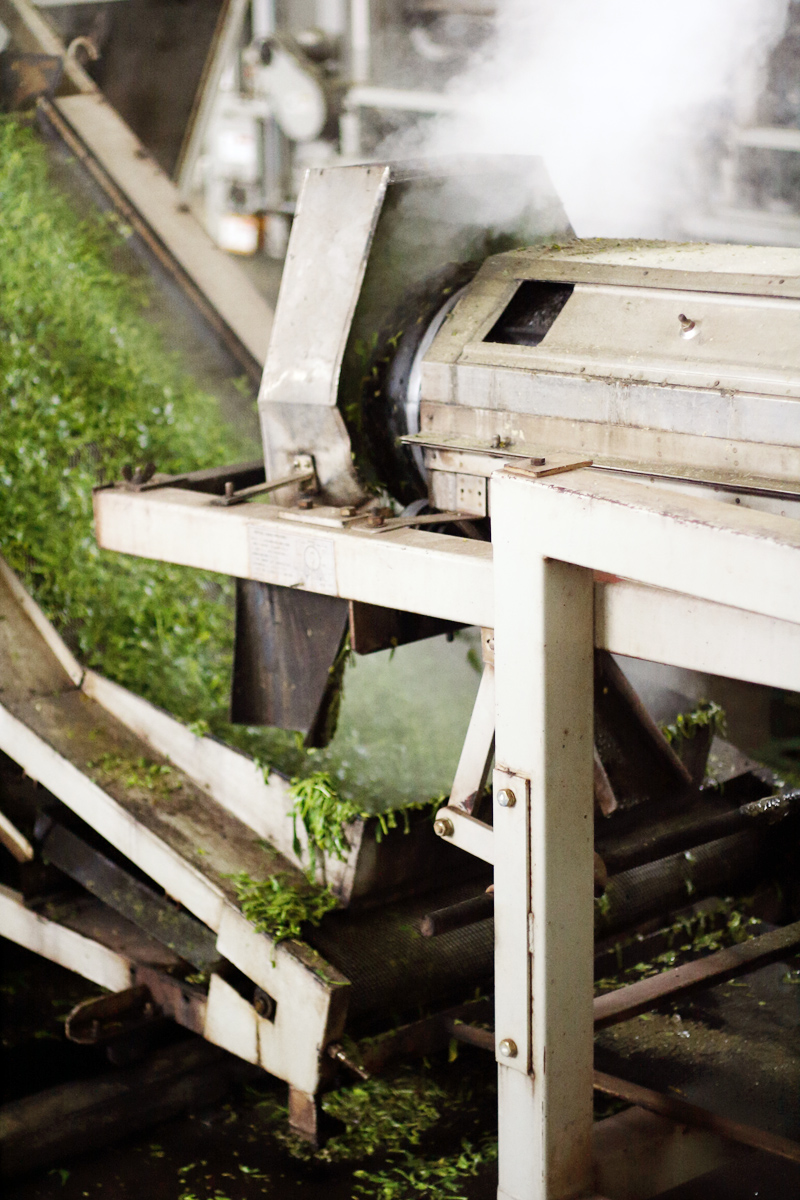 |
 |
Breathe in history
This is where the tea part of our journey through China ends. On April 20, we leave Chengdu by sleeper train. Five more days full of history and cultural experiences await us. We will visit Xi'an and the Terracotta Army Museum, imperial tombs, traditional Chinese opera, city fortifications, and the imperial Huaqing Hot Springs. The conclusion of our journey belongs to Beijing and a visit to the Forbidden City, the imperial summer residence, and the Great Wall of China. Our farewell to our tea teacher concluded three wonderful weeks full of kind and friendly people and knowledgeable guides proud of their country's more than 5,000 years of history. To this day, we are still trying to process all the experiences and moments we had on our journey to the homeland of tea.
The article was published in HORECA magazine (March–April 2011).
